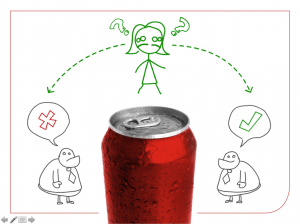“Should I drink out of this?” science, policy and risk in regulation of chemicals
Paul Whaley and Dr Crispin Halsall (LEC) discuss the critical issue of how evidence gets used in policy making and risk assessment of chemical products in Europe. This has serious implications for human health, as well as for the rest of nature.
Paul says: we hope that our regulators ensure that the chemicals to which we are exposed every day, in drinking water, in food, in toys, in car exhaust and electronic cigarettes, are safe. Unfortunately, it is far from clear that is the case.
Take the example of bisphenol-A, a common additive to polycarbonate drinking bottles and used in the resin lining of food cans. The chief concern with BPA is that in the body it might act like the female hormone oestrogen. With over 6000 published studies on the substance, you might expect there to be consensus on whether or not it should be used in food contact materials. If you do expect that, you would be wrong.
Although the European Food Safety Authority says it is safe in current uses, the US FDA is not so sure, and environmental NGOs for the most part say definitely not. The EU has banned BPA in baby bottles and other uses in which it comes into contact with infant food; the French Government is banning it from food contact materials altogether; and the Swedish government is even banning it in receipt papers.
The problem is, how do we know who is right? And if we don’t know who is right, how can we be confident that policy-makers are being effective in preventing harm from the thousands of chemicals we are exposed to in our day-to-day lives? And if nobody can be confident in the experts, how do we expect debates about chemical safety ever to become resolved?
To view the pdf presentations click the links below

